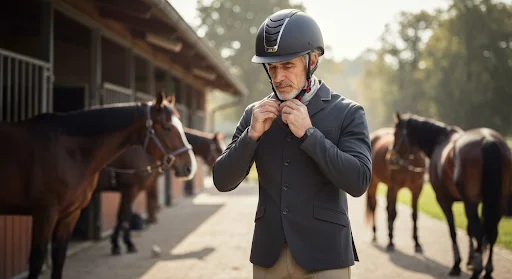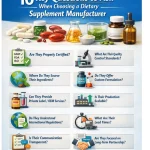Key Highlights
- A certified riding helmets is your most crucial piece of safety equipment.
- Unlike a motorcycle helmet, an equestrian helmet is designed for specific riding impacts.
- Always choose a helmet that meets a recognized safety standard and has the proper certification.
- A good fit is essential for maximum protection, so understanding the shape of your head is key.
- Modern helmets feature advanced materials and a superior ventilation system for comfort.
- Regularly inspect your helmet and replace it after any impact or every five years.
Introduction
Welcome to your essential guide for choosing the perfect horse riding helmet. Whether you’re a seasoned rider or a beginner, safety comes first. A high-quality, well-fitted helmet is crucial for protection. This guide covers safety standards, finding the right fit, and choosing certified helmets in Australia—so you can ride confidently.
Unlock hidden strategies to boost on Related post and engage clients fast.
Understanding the Importance of Riding Helmets
Horse riding is thrilling but risky—a fall can cause serious head injuries, no matter your experience. Wearing a certified helmet every ride is essential.
Riding helmets are designed to absorb shocks and protect against equestrian impacts, greatly reducing injury risk. Selecting a helmet that fits your head shape ensures it stays secure and offers maximum protection.
Types of Riding Helmets Explained
Riding helmets come in a wide range of styles, materials, and colors to suit different needs and preferences. No longer limited to one-size-fits-all designs, modern helmets offer options from sleek to traditional looks. Key differences include ventilation, visor style, and materials. Knowing these features helps you choose the best helmet for you.
Traditional vs. Modern Helmet Designs
Riding helmets were once velvet-covered and traditional, but technology has advanced. Modern helmets use lightweight materials like carbon fibre for strength without bulk and feature improved ventilation for comfort. Innovations such as MIPS offer better protection against rotational impacts. Whether you prefer classic or modern styles, today’s helmets meet current safety standards.
Discipline-Specific Helmets for Equestrians
Yes, your riding discipline influences your helmet choice. While any certified helmet is better than none, some are designed for specific disciplines. For example, dressage riders may choose sleek, formal helmets, while those riding daily may prioritize comfort and ventilation. Brands like Samshield offer elegant options for dressage, while others suit more demanding activities like cross-country.
Most importantly, your helmet must meet safety standards for your competition level. If unsure about requirements, consult your governing body or seek professional advice before choosing.
Features to Consider When Choosing a Riding Helmet
Choosing a helmet involves more than color preference. Key features like fit, ventilation, chin strap type, and materials affect safety and comfort. Ensure the helmet fits your head shape and has current safety certification. Evaluating these factors will help you find a helmet you’ll enjoy wearing every ride.
Fit, Comfort, and Adjustability
A helmet only protects you if it fits properly. It should feel snug all around, with no pressure points, and sit level—about one to two finger-widths above your eyebrows. When you shake your head, the helmet shouldn’t shift.
Modern helmets often include removable liners and adjustable padding for a custom fit, especially for different head shapes. The rear harness should cradle the base of your skull for added stability.
Check these signs of a good fit:
- No gaps between your head and padding
- No painful pressure points
- Helmet presses down slightly when you yawn
Materials Used and Durability
Modern riding helmets use advanced materials for protection. The outer shell is usually made from impact-resistant plastics like polycarbonate or composites such as carbon fibre or Kevlar, chosen for their strength and ability to distribute impact.
Inside, a layer of expanded polystyrene (EPS) foam absorbs energy by crushing during a fall. This foam is engineered for optimal impact absorption.
A helmet’s durability depends on both materials and care. Dropping your helmet can damage the foam liner, even if it looks fine. Handle your helmet carefully to maintain its protective effectiveness.
Caring for Your Riding Helmet
Your riding helmet is essential for safety, so proper care is crucial for its durability. Regular cleaning and correct storage keep it functional and looking good. Maintain the shell and vents, protect from extreme temperatures and drops, and replace when needed. Follow these best practices to ensure your helmet stays in top condition.
Cleaning and Maintenance Tips
Keeping your helmet clean is easy. Wipe the outer shell with a soft, damp cloth and avoid harsh chemicals that can damage it.
Removable liners can be hand-washed with mild soap and water to remove sweat and bacteria. For non-removable liners, use a helmet cleaning spray. Clean ventilation ports with a soft brush.
Helmet care tips:
- Store in a cool, dry place away from sunlight—use a padded bag if possible.
- Never leave your helmet in a hot car; heat can damage the foam.
- Clean liner and chin straps regularly to prevent irritation.
When to Replace Your Helmet
Replace your helmet after any fall that involves a head impact, even if there’s no visible damage—the protective foam may be compromised. Helmets also degrade over time from sweat, heat, and sunlight; replace yours every five years from the date of manufacture (check the sticker inside). Signs like a cracked shell, frayed straps, compressed padding, or poor fit mean it’s time for a new helmet to ensure your safety.
Budget vs. Premium Riding Helmets
Helmet prices vary widely. Are premium models worth it? While all certified helmets meet safety standards, premium options often use better materials, offer more comfort, last longer, and look better. They may include advanced tech, improved ventilation, or a tailored fit. Knowing what each price point offers helps you choose the best value for your needs.
Comparing Price Points and Features
The main difference between budget and premium helmets is in their materials and features. Budget helmets offer certified protection, making them ideal for beginners or those with basic needs.
Premium helmets cost more but use lighter, stronger materials like carbon fibre, advanced safety systems like MIPS, better ventilation, and improved fit. They also offer more style and customization options.
Here’s a quick comparison:
| Feature | Budget Helmets | Premium Helmets |
| Safety | Meets certification standards | Exceeds standards; may include MIPS |
| Materials | Standard plastics, EPS foam | Advanced composites, higher-grade foam |
| Comfort & Fit | Basic padding, simple fit system | Multiple liners, advanced harness, superior airflow |
| Style & Finish | Limited colours, basic finish | Wide colour selection, custom finishes |
Value for Money and Longevity

Consider long-term value when budgeting for a helmet. Premium helmets cost more upfront but offer greater durability and comfort, making them a smart investment for frequent riders.
High-quality materials extend the helmet’s lifespan (up to five years if undamaged), while superior ventilation and fit make it comfortable for long hours—ideal for those who train or compete regularly.
The best value is a certified helmet that fits well and feels good every ride. Whether budget or premium, prioritize safety. Choose models with solid warranties and crash replacement policies to protect your investment.
Conclusion
In conclusion, riding helmets are an essential aspect of equestrian safety that cannot be overlooked. They provide crucial protection, and understanding the different types and features available can significantly impact your riding experience. Whether you’re a beginner or an experienced rider, selecting the right helmet tailored to your needs and comfort ensures not only your safety but also enhances your confidence in the saddle. Remember to regularly maintain your helmet and replace it when necessary to keep up with safety standards. Prioritize your well-being and make informed decisions about your riding gear. If you have any questions or need further assistance, feel free to reach out—we’re here to help you stay safe while enjoying your riding adventures!
Frequently Asked Questions
Are there popular helmet brands available in Australia?
Yes, many world-class helmet brands are available in Australia. Equestrians can find a wide range of options from trusted names like Charles Owen, Samshield (including the Shadowmatt style), KEP (such as the Smart Polish), Kooki, and Kask with its popular Star Lady Pure Shine model, ensuring access to top-tier safety and style.
How do I know if my helmet fits correctly?
A correctly fitted helmet is snug with no pressure points. It should sit level on your head, about one to two finger-widths above your eyebrows. The helmet shouldn’t move when you shake your head, and the chin strap should be secure, allowing one finger to fit underneath.
What materials are most common in riding helmets?
Riding helmets typically have a hard outer shell made of polycarbonate, carbon fibre, or Kevlar. The inner protective layer consists of high-grade expanded polystyrene (EPS) foam, which is designed to absorb impact. Many also feature removable padding and advanced ventilation systems for comfort.
How often should I replace my riding helmet?
You should replace your riding helmet every five years from its manufacturing date, or immediately after any impact, even if there’s no visible abrasion or damage. The materials degrade over time, and an impact compromises the helmet’s protective durability. Always seek professional advice if you’re unsure about your helmet’s condition.
Dive into content that empowers on 2A Magazine and wows your audience.







